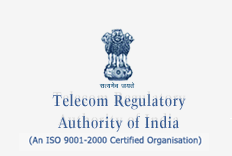 All of you are aware that, TRAI has recently published a final recommendation paper on ‘Spectrum Management and Licensing Framework’. My first reaction to this recommendation draft was- Don’t be panic. The way media & market reacted over the news was hyper. Reason being; only few recommendations in the draft related to spectrum pricing were highlighted over others. If that’s not the case, few operators felt that TRAI’s spectrum allocation policy isn’t enabling level playing field. But there’s much more to applaud in the draft than criticize; yet the recommendations fell short of expectations.
All of you are aware that, TRAI has recently published a final recommendation paper on ‘Spectrum Management and Licensing Framework’. My first reaction to this recommendation draft was- Don’t be panic. The way media & market reacted over the news was hyper. Reason being; only few recommendations in the draft related to spectrum pricing were highlighted over others. If that’s not the case, few operators felt that TRAI’s spectrum allocation policy isn’t enabling level playing field. But there’s much more to applaud in the draft than criticize; yet the recommendations fell short of expectations.
Though this post will discuss more about Spectrum Pricing issue in later para, let me start with few of the recommendations which I term as progressive approach to spectrum management:-
- Keeping in view that spectrum is scarce resource, no more UAS will be awarded henceforth.
- Uniform license fee will be applicable across all Telecom licenses & Service areas.
- TRAI has also identified the need of spectrum in country in coming years, based on projected subscriber & data traffic growth. According to estimate, there’s need of 500 MHz to 800 MHz spectrum bandwidth of which only 287 MHz to 450MHz will be made available. I have already talked about this topic earlier.
- Bringing of Telecom Infrastructure companies (Infrastructure Tower-I) under the fold of licensing regime.
- Drop in license fee charges: Access service providers i.e. telecom operators will have to pay 6{af589cdba9d77786c8c861317dbad60bba1e2ebbf56e2ffab874a1b59fde9ce3} license fee across all telecom circles, as opposed to earlier categorization, with varied license fee from 10{af589cdba9d77786c8c861317dbad60bba1e2ebbf56e2ffab874a1b59fde9ce3} to 6{af589cdba9d77786c8c861317dbad60bba1e2ebbf56e2ffab874a1b59fde9ce3}.
- Linking of assigned additional spectrum with network roll-out obligations will certainly help in improving rural tele-density.
- De-linking of spectrum from license, where operators have to apply for spectrum separately while renewing.
- Spectrum re-farming is proposed for 900 MHZ band. Under spectrum refarming, spectrum held by licensee in 900 MHz band will be replaced by equal assignment in 1800 MHz band.
- Amount of spectrum that can be assigned by DoT to licensee would be 8/5 MHz in GSM/CDMA category across all circles except, Delhi & Mumbai, where 10/6.25 MHz spectrum will be assigned.
- Use of subscriber linked criteria to assign spectrum will be scrapped henceforth.
Certainly, I wouldn’t be in position to enlist all of them and interested parties should refer to given links above for details.
Now let’s talk about spectrum pricing issue which has stirred the market & industry the most. This has been discussed in 3.G para of recommendation draft. TRAI has employed four methods to estimate the present value of 4th operator’s entry fee, based on Time Value of Money, in 800/900 & 1800 MHz spectrum band. Out of the four, Ratio of growth in AGR per MHz has yield the maximum value, which is then compared to current 3G auction price of spectrum in 2100MHz band. This has resulted into the total price of 15000 Cr INR for 6.2 MHz spectrum. And this is where conflict starts coming in. Now the question is; should we apply the current 3G price to 1800 MHz band spectrum in GSM & 800 MHz band in CDMA?
According to one view 1800 MHz (2G) band is treated equal to 2100 MHz band (3G). Others claim that they can’t be treated equally as currently 2G is 2.75G (EDGE) technology and 2.75G should be compared with 3G on the basis of spectral efficiency. The decision is pending and TRAI hasn’t concluded the matter as said in draft:
The Authority, therefore, recommends that the 3G prices best adopted as the ‘Current price’ of spectrum in the 1800 MHz band. At the same time, Authority is separately initiating an exercise to further study this subject and would apprise the Government of its findings.
I have a different opinion. When you calculate the spectrum price per MHz basis and talk about Access technologies involved in 2G (TDMA-FDM) & 3G (WCDMA) then per MHz calculations are wrong. While in 6.2 MHz 2G band, you can have 31 channels with each channel carrying 8 traffic channels, in corresponding 5MHz 3G band, you can have infinite number of channels available, theoretically. So in 2G there was limitation of capacity which was then tackled with cellular engineering concepts of frequency reuse, allowing same 31 channels to be used at some far distance. And as said above, in 3G, theoretically you have infinite capacity in hand. More over the spectral efficiency, which is the basis of TRAI’s calculation, which is again based on number of factors such as access technology, coding efficiency etc is higher in 3G. So when bands were allocated for use in 2G/3G, they just can’t be treated equal as access technology involved in each is different- one is superior to other. Had it been the case of allocating the ‘Green Field’ spectrum (blank spectrum) to 2G & 3G both, operators would prefer to opt for better technology such as 3G and maximize their revenues. This case arises from the fact that, every technology up-gradation is backward compatible and till entire mass migrates to 3G band, the pricing dilemma is likely to remain.
Now, what if TRAI has followed the auction process of 2G bands just like 3G auction process? I feel when earlier telecom license were awarded Cellular Telephony was in emerging stage and no one speculated the dramatic growth in one decade. Not operators and not even TRAI/DoT. The need of auction on TRAI’s part (TRAI thinking) is based on assumption that 2G spectrum was awarded at cheap price and the entire process of awarding license was at fault. Now if you look back, it’s true to say that. Partially because, 3G spectrum is getting market price. And partially because few companies sold their equity to very high price based on just spectrum-no rollout scene.
But there’s other way round to look. The low entry fee during the earlier regime has enabled operators to roll out network fast and invest into network resources more. The focus was early rollouts & better quality. This low entry barrier resulted into more competition and ultimately in the reduction of mobile tariffs. This enabled us to reach 600 million subscribers count in span of 10 years. Had we gone the other way in 2G case, the picture would be different. When telecom companies spend more on spectrum than estimated, the likely impact will the network rollouts. This in turn results in poor coverage and which would result in lesser penetration, low tele-density. This would in turn result into costlier mobile tariffs & services, as operators wouldn’t mind exploiting subscribers. This in turn affects the entire telecom ecosystem. TRAI’s earlier methods of awarding 2G spectrum helped industry shaped to mature and one of the fastest growing industries in the world. Perhaps, now when every Paanwala, Rickshawala & Street Worker has mobile, the credit goes to TRAI/DoT for keeping low entry barrier to enter into telecom business. It wouldn’t be possible, if we would have gone through auction way in 2G case.
So pricing 1800 MHz band spectrum at current 3G spectrum price is a false logic, neither they should be treated equal, as it was based on different market conditions and dynamics. Is there any way to take these factors into account while calculating spectrum price, then I would recommend TRAI to do so. Awarding 2G spectrum was a starting point of telecom revolution in India. The ultimate beneficiary of this is the common man. Government didn’t lose, neither telcos gained. TRAI should treat all stakeholders equally, namely TRAI/Authority, Telecom Companies & Subscribers. If you de-link access technology (2G/3G) from spectrum itself, then you would understand that there is no better way to estimate the price of spectrum. I wouldn’t say auction is better way than beauty contest. It depends on the way market unfolded after auctions are carried out. The beauty contest way helped us to reach us at 600 million, 45{af589cdba9d77786c8c861317dbad60bba1e2ebbf56e2ffab874a1b59fde9ce3} teledensity; auctions mayn’t do the same. So when TRAI thinks of loss of revenue in 2G auction, there’s always other brighter side to look at the issue. I feel, TRAI should carry out detailed study of pricing matter before reaching to conclusion.


